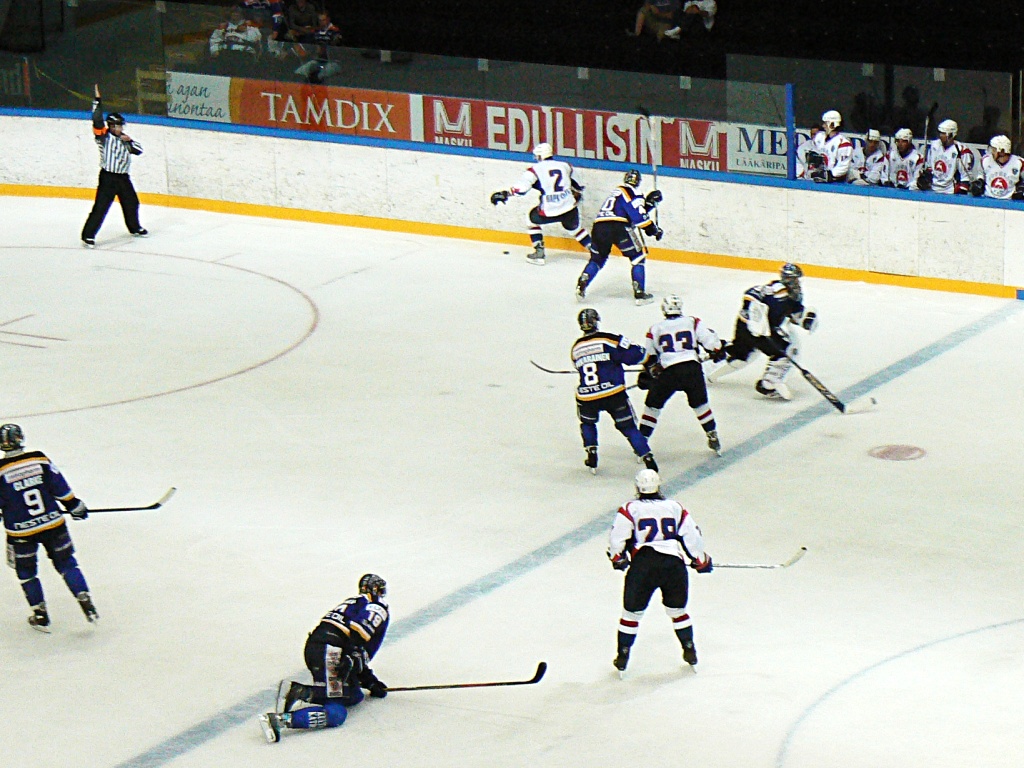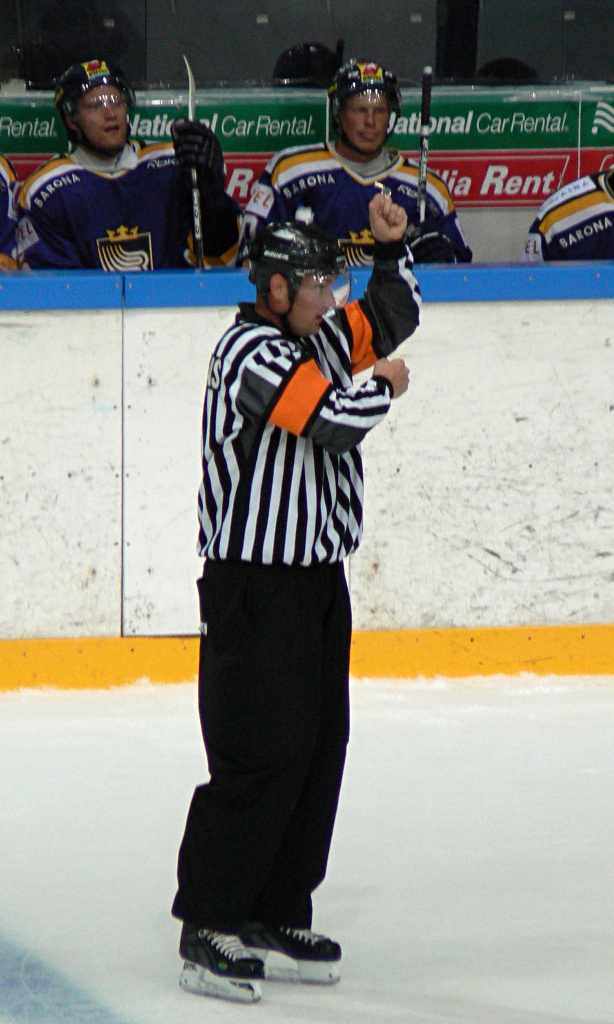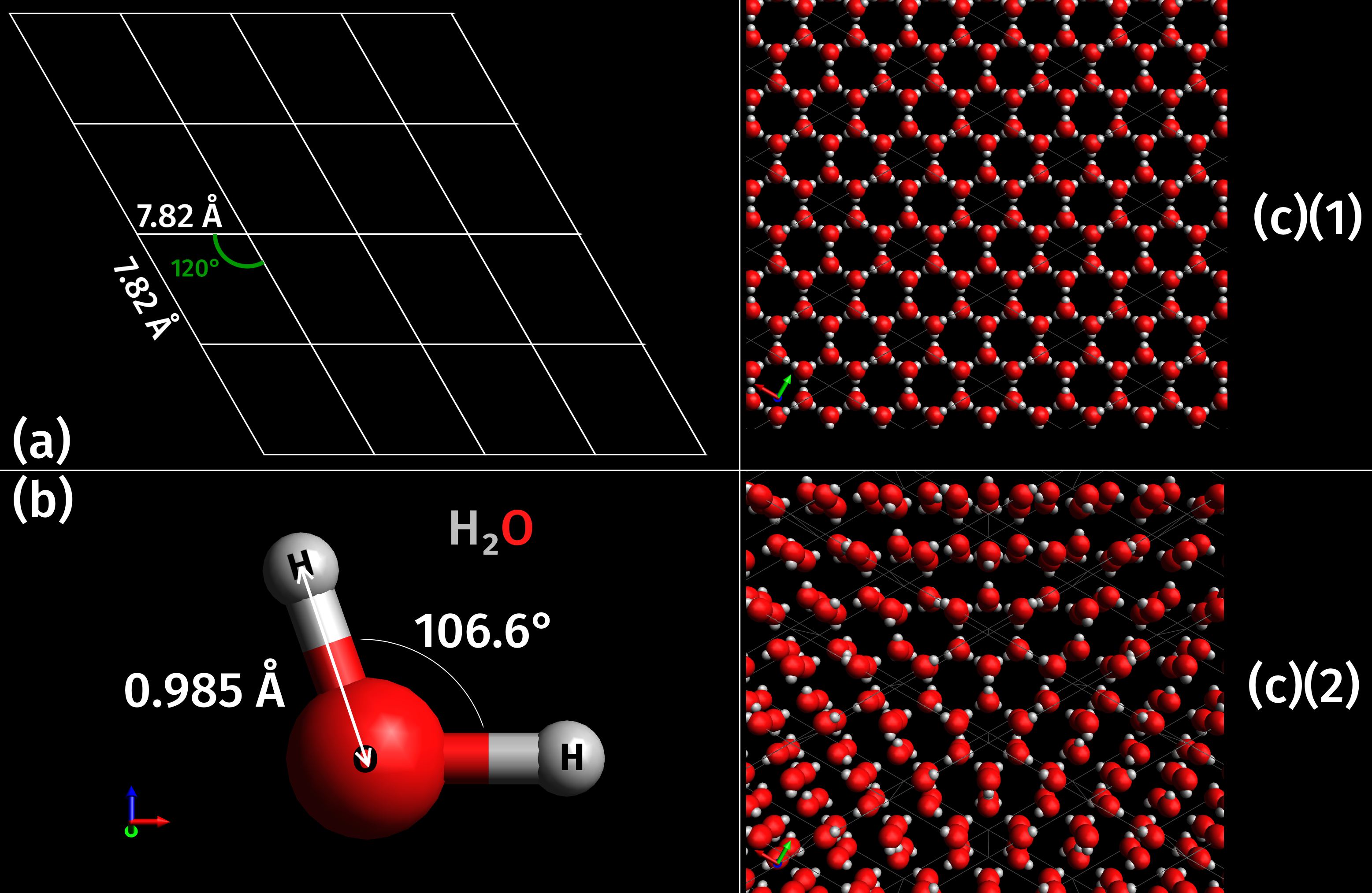|
Hooking (ice Hockey)
Hooking is a penalty in ice hockey and ringette. This article deals chiefly with ice hockey. The National Hockey League defines it in Rule 55 as "the act of using the stick in a manner that enables a player or goalkeeper to restrain an opponent." Hooking in the rules The NHL covers hooking in Rule 55, which defines it as "the act of using the stick in a manner that enables a player or goalkeeper to restrain an opponent." It goes on to specify that "when a player is checking another in such a way that there is only stick-to-stick contact, such action is not to be penalized as hooking." The NHL groups hooking with other "Restraining fouls" such as holding, interference and tripping. The IIHF covers hooking in Rule 533, defining a player guilty of hooking as one "who impedes or seeks to impede the progress of an opponent by hooking him with the stick." Both codes allow for hooking to be penalized with either a minor or major penalty; although hooking is usually a minor penalty, ... [...More Info...] [...Related Items...] OR: [Wikipedia] [Google] [Baidu] |
Ice Hockey
Ice hockey (or simply hockey in North America) is a team sport played on ice skates, usually on an Ice rink, ice skating rink with Ice hockey rink, lines and markings specific to the sport. It belongs to a family of sports called hockey. Two opposing teams use ice hockey sticks to control, advance, and Shot (ice hockey), shoot a vulcanized rubber hockey puck into the other team's net. Each Goal (ice hockey), goal is worth one point. The team with the highest score after an hour of playing time is declared the winner; ties are broken in Overtime (ice hockey), overtime or a Shootout (ice hockey), shootout. In a formal game, each team has six Ice skating, skaters on the ice at a time, barring any penalties, including a goaltender. It is a contact sport#Grades, full contact game and one of the more physically demanding team sports. The modern sport of ice hockey was developed in Canada, most notably in Montreal, where the first indoor ice hockey game, first indoor game was play ... [...More Info...] [...Related Items...] OR: [Wikipedia] [Google] [Baidu] |
Ringette
Ringette is a winter team sport played on an ice rink using ice hockey skates, straight sticks with drag-tips, and a blue, rubber, pneumatic ring designed for use on ice surfaces. While the sport was originally created exclusively for female competitors, it has expanded to now include participants of all gender identities. Although ringette looks ice hockey-like and is played on ice hockey rinks, the sport has its own lines and markings, and its offensive and defensive play bear a closer resemblance to lacrosse or basketball. The sport was created in Canada in 1963 by Sam Jacks from West Ferris, Ontario, and Red McCarthy from Espanola, Ontario. Since then, it has gained popularity to the point where, in 2018, more than 50,000 individuals, including coaches, officials, volunteers, and over 30,000 players, registered to take part in the sport in Canada alone. The sport has continued to grow and has spread to other countries including the United Arab Emirates. Two different ... [...More Info...] [...Related Items...] OR: [Wikipedia] [Google] [Baidu] |
National Hockey League
The National Hockey League (NHL; , ''LNH'') is a professional ice hockey league in North America composed of 32 teams25 in the United States and 7 in Canada. The NHL is one of the major professional sports leagues in the United States and Canada and is considered the premier professional ice hockey league in the world. The Stanley Cup, the oldest professional sports trophy in North America, is awarded annually to the Stanley Cup playoffs, league playoff champion at the end of each season. The International Ice Hockey Federation (IIHF) views the Stanley Cup as one of the "most important championships available to the sport". The NHL is headquartered in Midtown Manhattan. The National Hockey League was organized at the Windsor Hotel (Montreal), Windsor Hotel in Montreal on November 26, 1917, after the suspension of operations of its predecessor organization, the National Hockey Association (NHA), which had been founded in 1909 at Renfrew, Ontario. The NHL immediately took the NHA ... [...More Info...] [...Related Items...] OR: [Wikipedia] [Google] [Baidu] |
Hockey Stick
A hockey stick is a piece of sports equipment used by the players in all the forms of hockey to move the ball or puck (as appropriate to the type of hockey) either to push, pull, hit, strike, flick, steer, launch or stop the ball/Hockey puck, puck during play with the objective being to move the ball/puck around the playing area using the stick, and then trying to score. The word "stick" is a generic term for the equipment since different types of hockey require different forms and sizes to be effective. Field/ice/roller hockey all have a visually similar form of stick with a long shaft or handle which can be held with two hands, and a curved and flattened end; the end and curvature of these sticks are generally the most visible differences between the sticks for these sports. A modern underwater hockey stick bears little resemblance to any field/ice/roller hockey stick, since it is much smaller to enable it to be used exclusively in one hand, and it also has to be produced in one ... [...More Info...] [...Related Items...] OR: [Wikipedia] [Google] [Baidu] |
Holding (ice Hockey)
A penalty in ice hockey is a punishment for an infringement of the rules. Most penalties are enforced by sending the offending player to a penalty box for a set number of minutes. During the penalty the player may not participate in play. Penalties are called and enforced by the referee, or in some cases, the linesman. The offending team may not replace the player on the ice (although there are some exceptions, such as fighting), leaving them short-handed as opposed to full strength. When the opposing team is said to be on a '' power play'', they will have one more player on the ice than the short-handed team. The short-handed team is said to be "on the penalty kill" until the penalty expires and the penalized player returns to play. While standards vary somewhat between leagues, most leagues recognize several common varieties of penalties, as well as common infractions. The statistic used to track penalties is called "penalty minutes" and abbreviated to "PIM" (spoken as single wor ... [...More Info...] [...Related Items...] OR: [Wikipedia] [Google] [Baidu] |
Tripping (ice Hockey)
A tripping or obstruction tripping penalty in ice hockey and ringette is called by the Official (ice hockey), referee when a player trips an opposing player with their hockey stick or ringette stick, or uses their Ice skate#Hockey skates, skate against the other player's skate ("slew footing"), causing them to lose balance or fall and obstruct them from making their desired play. This article deals chiefly with ice hockey. A tripping call usually results in a two-minute minor penalty on the player that caused the infraction. However, if the player is called for slew-footing, they can be assessed a match penalty at the official's discretion. If the player was tripped on a Breakaway (ice hockey), breakaway (with no opponents to pass other than the goaltender), a tripping call may instead result in a Penalty shot (ice hockey), penalty shot for the tripped player. See also *Penalty (ice hockey) References Ice hockey penalties Ice hockey terminology {{Icehockey-stub ... [...More Info...] [...Related Items...] OR: [Wikipedia] [Google] [Baidu] |
IIHF
The International Ice Hockey Federation (IIHF; ; ) is a worldwide governing body for ice hockey. It is based in Zurich, Switzerland, and has 84 member countries. The IIHF maintains the IIHF World Ranking based on international ice hockey tournaments. Rules of play for IIHF events differ from hockey in North America and the rules of the National Hockey League (NHL). Decisions of the IIHF can be appealed through the Court of Arbitration for Sport in Lausanne, Switzerland. The IIHF maintains its own hall of fame for international ice hockey. The IIHF Hall of Fame was founded in 1997, and has been located within the Hockey Hall of Fame since 1998. Previously, the IIHF also managed the development of inline hockey; however, in June 2019, the IIHF announced that they would no longer govern inline hockey or organize the Inline Hockey World Championships. Functions The main functions of the IIHF are to govern, develop and organize hockey throughout the world. Another duty is to pr ... [...More Info...] [...Related Items...] OR: [Wikipedia] [Google] [Baidu] |
Penalty (ice Hockey)
A penalty in ice hockey is a punishment for an infringement of the rules. Most penalties are enforced by sending the offending player to a penalty box for a set number of minutes. During the penalty the player may not participate in play. Penalties are called and enforced by the Official (ice hockey)#Referees, referee, or in some cases, the Official (ice hockey)#Linesmen, linesman. The offending team may not replace the player on the ice (although there are some exceptions, such as fighting), leaving them short handed, short-handed as opposed to full strength. When the opposing team is said to be on a ''Power play (ice hockey), power play'', they will have one more player on the ice than the short-handed team. The short-handed team is said to be "on the penalty kill" until the penalty expires and the penalized player returns to play. While standards vary somewhat between leagues, most leagues recognize several common varieties of penalties, as well as common infractions. The statist ... [...More Info...] [...Related Items...] OR: [Wikipedia] [Google] [Baidu] |
2004–05 NHL Lockout
The 2004–05 NHL lockout was a labor lockout that resulted in the cancellation of the National Hockey League (NHL) season, which would have been its 88th season of play. The main dispute was the league's desire to implement a salary cap to limit expenditure on player salaries, which was opposed by the NHL Players Association (NHLPA), the players' labor union, who proposed an alternative system of revenue sharing. Attempts at collective bargaining before the season began were unsuccessful. The lockout was initiated on September 16, 2004, one day after the expiration of the existing collective bargaining agreement (CBA), which itself had been the result of the 1994–95 lockout. During the lockout, further attempts to negotiate a new CBA floundered, with neither side willing to back down, and this led to the entire season being canceled on February 16, 2005. The NHL and NHLPA negotiating teams finally reached an agreement on July 13, 2005, with the lockout officially ending ... [...More Info...] [...Related Items...] OR: [Wikipedia] [Google] [Baidu] |
Ice Hockey Penalties
A penalty in ice hockey is a punishment for an infringement of the rules. Most penalties are enforced by sending the offending player to a penalty box for a set number of minutes. During the penalty the player may not participate in play. Penalties are called and enforced by the referee, or in some cases, the linesman. The offending team may not replace the player on the ice (although there are some exceptions, such as fighting), leaving them short-handed as opposed to full strength. When the opposing team is said to be on a '' power play'', they will have one more player on the ice than the short-handed team. The short-handed team is said to be "on the penalty kill" until the penalty expires and the penalized player returns to play. While standards vary somewhat between leagues, most leagues recognize several common varieties of penalties, as well as common infractions. The statistic used to track penalties is called "penalty minutes" and abbreviated to "PIM" (spoken as single wo ... [...More Info...] [...Related Items...] OR: [Wikipedia] [Google] [Baidu] |
Ice Hockey Terminology
Ice is water that is frozen into a solid state, typically forming at or below temperatures of 0 ° C, 32 ° F, or 273.15 K. It occurs naturally on Earth, on other planets, in Oort cloud objects, and as interstellar ice. As a naturally occurring crystalline inorganic solid with an ordered structure, ice is considered to be a mineral. Depending on the presence of impurities such as particles of soil or bubbles of air, it can appear transparent or a more or less opaque bluish-white color. Virtually all of the ice on Earth is of a hexagonal crystalline structure denoted as ''ice Ih'' (spoken as "ice one h"). Depending on temperature and pressure, at least nineteen phases ( packing geometries) can exist. The most common phase transition to ice Ih occurs when liquid water is cooled below (, ) at standard atmospheric pressure. When water is cooled rapidly (quenching), up to three types of amorphous ice can form. Interstellar ice is overwhelmingly low-density amorphous ice (L ... [...More Info...] [...Related Items...] OR: [Wikipedia] [Google] [Baidu] |







